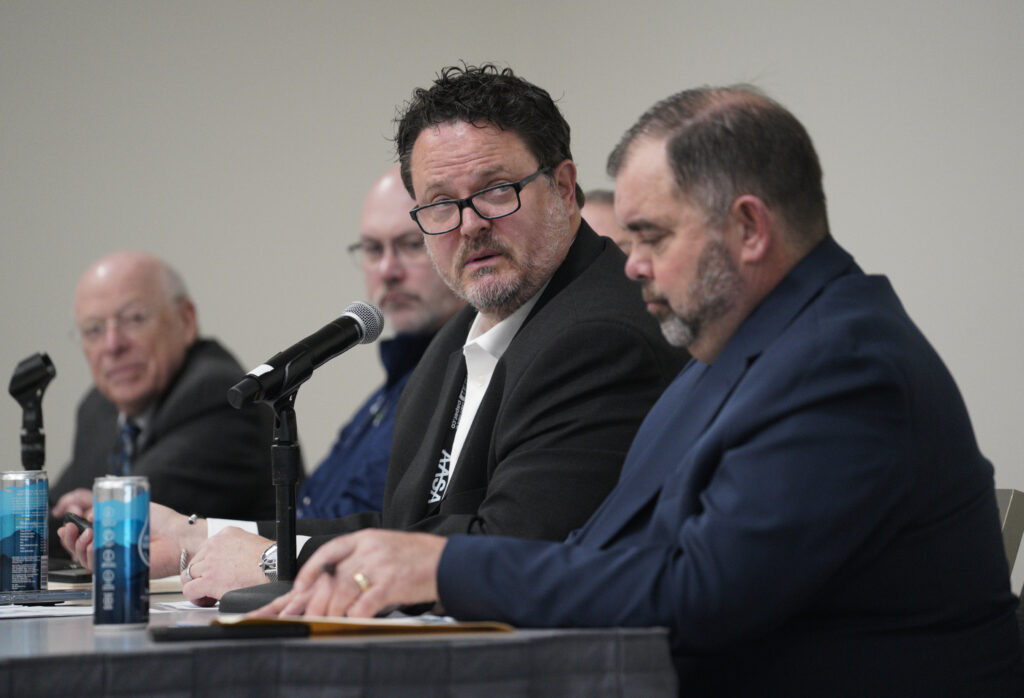Superintendent Ryan Noss recalls observing a community circle, which is how students in Corvallis School District in Oregon begin each day. With children gathered around, the teacher challenged them to ponder a question: How do you feel when you are new?
Some said excited, others apprehensive. The conversation had a purpose. The teacher then informed the students that there would be a new student in the classroom the next week.
“All of those things you felt are the things this student is going to feel when they come into our community,” Noss recalls the teacher saying. “So as a community, how are we going to help them transition in?”
Noss shared his school district’s story as a panelist in the Saturday morning AASA conference session “Effectively Implementing Social-Emotional Learning: Insights from School Districts’ Successes and Setbacks.”
Under the leadership of Noss, Corvallis is viewed as a district leader in the implementation of social-emotional learning. It’s an effort that he calls critical to developing skills in young people to prepare them for the world ahead.
“School is the place where everyone comes together with differences in perspectives and experiences,” he said. “We as educators have to leverage that in a way that makes the world better.”
The panel was led by Sheldon Berman, AASA’s lead superintendent for SEL. Berman conducted a grant-funded study that led to his 2023 book Implementing Social-Emotional Learning, which explored the SEL journeys of school districts in Corvallis; Cleveland; Virginia Beach, Va.; Marshalltown, Iowa; Moriarty and Edgewood, N.M.; and Naperville, Ill.
What did he learn?
- SEL implementation works best when it begins with classroom and school culture.
- Depth is more important than breadth initially.
- Professional capacity and professional development are important.
- Administrative vision and leadership are critical.
Berman and Noss were joined on the stage by superintendents Aaron Spence (Loudoun County Public Schools in Virginia), Dan Bridges (Naperville Community School District 203 in Illinois) and Theron Schutte (Marshalltown Community School District in Iowa). All four superintendents are members of AASA’s Social and Emotional Learning Cohort.
“The reason SEL worked in the districts I spent time in and the reason that these four people are up here is because they care,” Berman said. “It’s part of their vision and it’s part of the goals they set for the district. They understand what SEL is and how to make it work, and when they walk into classrooms they know what they’re looking for.”
All of the districts, Berman added, shifted instruction to be more collaborative and built social-emotional learning targets into lessons to go alongside academic targets, launched advisory programs and implemented SEL courses and service-learning components.
The superintendents each laid out the ways their districts implemented SEL through strategic planning, comprehensive training and professional development.
They also discussed how they overcame roadblocks and resistance. Spence recalls having a school board member go on Fox News to raise alarm and spread misinformation about SEL, which led to an outcry among a segment of the community.
“We were working really hard to understand what [SEL] looked like and how it was living in our classrooms, but we weren’t being very communicative about sharing that information,” Spence said. “We needed to be forward-facing with the framework and create messaging around social-emotional learning.”
(Michael Klitzing is a freelance writer in San Diego and a reporter for Conference Daily Online.)


